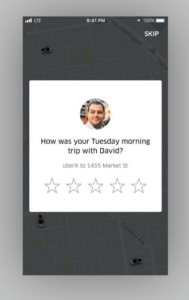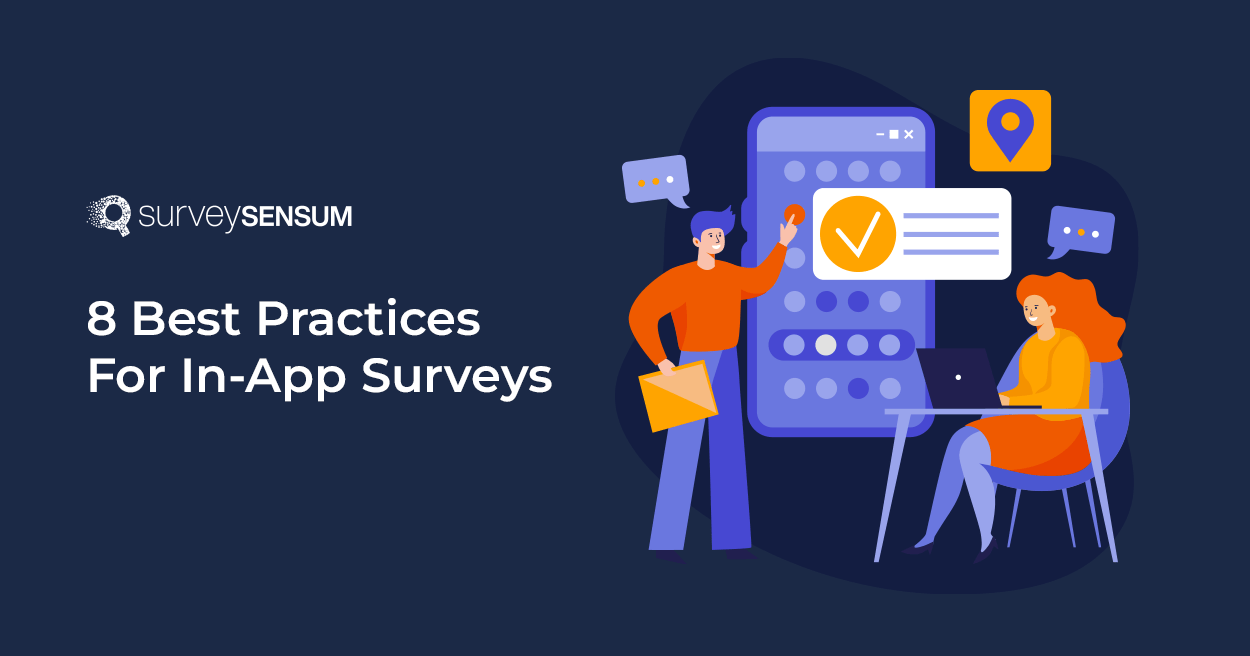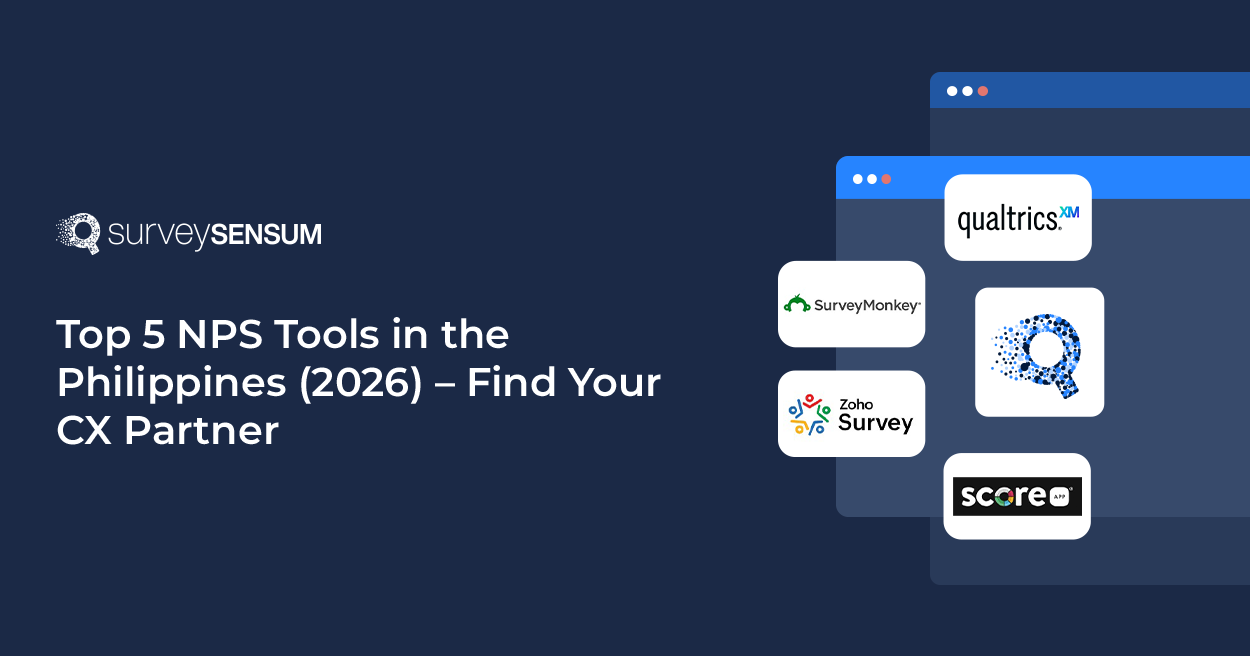

Did you ever notice that after attending a meeting on Google Meet a survey pops up
→ ‘How likely are you to recommend Google Meet to other people you work with?’
This is what the in-app survey looks like. These surveys provide a unique opportunity to gather customer feedback right when they are interacting with your product. When conducted effectively, these surveys help you refine your app’s features and functionality. They also provide you with valuable insights to enhance the overall user experience, leading to higher customer satisfaction and retention rates.
What is an In-App Survey?
In-app survey is a method of collecting feedback and insights from users directly within a mobile application or software platform. These surveys are integrated into the application itself, allowing users to provide feedback while they are actively using the app.
Why Should You Opt for In-App Surveys?
8 In-App Survey Best Practices That Actually Work
- Don’t Disrupt the User Experience
- Make Sure to Include Open-Ended Questions
- Remove Friction and Motivate Users to Respond to Your Survey
- Send the Survey At the Right Time
- Keep Surveys Short and Concise with Clear, Specific, and Easy Questions
- Ask Targeted Questions Only
- Visual Design and User Experience
- Test and Iterate
Why Should You Opt for In-App Surveys?
In-app surveys often outperform web-based surveys in terms of response rates, as users are already within the app environment. Also, mobile surveys have a response rate between 1-3% whereas in-app surveys have a 13% response rate.
This is because in-app surveys are strategically designed to address the challenge of low response rates by reducing friction. And if used correctly, they can offer great insights into your customer’s pain points, preferences, and expectations.
They accomplish this in several ways:
- Seamless Integration: Users can share their thoughts and opinions right within the app, eliminating the need to navigate to external survey platforms or websites.
- Survey Timings: In-app surveys don’t just pop up randomly; instead, they strategically appear at moments when users are most engaged with the app. This ensures that users are more likely to participate as they are already immersed in the app’s functionality.
- Precise Targeting: These surveys reach out to the right users with highly relevant questions. This not only boosts response rates but also provides insights that are directly applicable to app improvement efforts
However, there are a few aspects of in-app surveys that brands don’t always get right, potentially causing them to miss out on the full potential of these surveys.
One common oversight is neglecting the crucial element of crafting the right questions at the right moment and designing the survey in a way that enhances the user experience. Additionally, brands often overlook the importance of utilizing a robust customer feedback platform that aids in tracking and analyzing the feedback gathered from the survey.
This is why with this blog we will delve deep into the 8 in-app best practices that brands can follow. These best practices will help them leverage the full potential of in-app surveys.
8 In-App Survey Best Practices That Actually Work
1. Don’t Disrupt the User Experience

Imagine exploring a hotel booking app. You are browsing through different hotels and trying to book one but a survey keeps popping up every 2 minutes. Annoying, right? This might even encourage you to quit the app altogether.
In-app surveys are a fantastic tool for gathering customer feedback. However, they can be a double-edged sword if not implemented thoughtfully.
One of the most common pitfalls is when your in-app surveys disrupt the user experience by presenting surveys at inopportune moments. This disruption can lead to frustration, decreased engagement, and, in some cases, users abandoning the app altogether.
To address this challenge, it’s essential to consider the context in which you introduce in-app surveys.
Let’s revisit the hotel booking app example. Here, the ideal time to send an in-app survey will be after the user is done with the hotel booking and is going through the booking details or waiting for confirmation. This is an ideal moment to present a survey about their booking experience.
It’s important to consider the placement of your survey within your app ecosystem. Refer to your journey map and pinpoint moments when users are waiting and are likely open to answering your questions.
2. Make Sure to Include Open-Ended Questions

In-app surveys aren’t just about collecting numerical ratings. To gain a more profound understanding of user sentiments and motivations, it’s essential to include open-ended questions alongside quantitative ones to understand their feedback in detail.
Open-ended questions serve as a portal to the user’s inner thoughts and emotions, enabling them to express themselves openly and offer invaluable insights that cannot be captured solely through quantitative data.
Some examples of open-ended questions that you can include are:
- Please tell us more about how the app’s navigation could be improved to better meet your needs.
- What more can we do to enhance your shopping experience on our app?
- What would you like to see in future updates of our app?
- How can we make our customer support more helpful and responsive to your needs?
3. Remove Friction and Motivate Users to Respond to Your Survey
One of the biggest challenges businesses face when launching surveys is to get customers to complete the surveys. And it’s essential to gather feedback from all the users – from your biggest fans to not-so-big bans.
To increase completion rates, consider implementing strategies that reduce friction and add motivation. One effective technique is integrating gamification elements. Gamification involves applying game-like elements to non-gaming contexts to engage and motivate users.
One classic example of gamification is SurveySensum. It employs progress bars at the bottom of its in-app surveys, showing users how much percentage of the survey they answered and how much is remaining.

4. Send the Survey At the Right Time
When it comes to in-app surveys, TIMING is everything. Users are more likely to provide valuable feedback when the survey is contextually related to their recent interactions or experiences within the app.
The key is to strike the right balance between gathering feedback and not disrupting the user experience.
So, When to Ask for In-App Feedback?
- After a Feature Update: Send a survey after implementing a significant feature update. This will allow you to gather insights immediately on the new functionality.
- When Users Complete Specific Events: Ask for feedback right after the user has completed some task or event. For example, your app offers educational courses, so asking for feedback right after a user completes a course is contextually relevant and likely to yield valuable insights.
- On a Continuous Basis After a Usage Threshold (but Controlled): Consider implementing a continuous feedback mechanism after users reach a certain threshold of app usage as it can provide ongoing insights. However, it’s essential to control the frequency and timing to avoid overwhelming users with too many surveys.
Consider Uber as an example. They often prompt users for feedback immediately after a ride is completed. This timing is ideal because it is related to the user’s recent experience, and it doesn’t disrupt the app’s primary function. Users can provide feedback while the ride is still fresh in their minds.

But, Avoid These Common Mistakes:
- Don’t Prompt New Users Too Soon: New users need time to explore your app and understand its features. Prompting new users for feedback too early in their journey can be off-putting. Wait until they have had a chance to engage with the app.
- Don’t Prompt Users in the Middle of Completing a Task: Interrupting users while they are in the middle of completing a task can lead to frustration. It’s best to wait until they have finished or reached a logical stopping point.
- Don’t Prompt Users Right After a Negative Experience: If a user has just encountered an issue within the app, it’s not the right time to ask for feedback. Give them a little space and time to resolve the issue before seeking their input.
- Don’t Be Too Pushy: Bombarding users with constant survey requests can be annoying and counterproductive. Strike a balance between gathering insights and respecting the user’s experience.
5. Keep Surveys Short and Concise with Clear, Specific, and Easy Questions
When it comes to crafting in-app surveys, brevity is your best friend. Users dislike lengthy surveys because they can be time-consuming, and overwhelming, and often lead to survey fatigue, which reduces the response rate. To maximize the effectiveness of your in-app surveys, it’s crucial to keep them short, concise, and to the point.
Strategies for crafting efficient survey questions
- Allow “other”, “N/A”, “neutral”, and “not sure” options for answers.
- Have a clear objective to keep your surveys focused.
- Use mutually exclusive multiple-choice answers.
- Start with an easy question to encourage users to continue with the survey.
- Ask the most important questions at the beginning in case users drop off before your survey ends.
- Only ask what’s really necessary
- Find the most effortless input fields, such as big radio buttons instead of dropdowns or sliders instead of numeric input fields
- Start with the most easy-to-answer question
Create Well-Designed In-App Surveys – Sign Up Here
6. Ask Targeted Questions Only
The success of in-app surveys lies in asking the right questions in the right context and to the right individuals.
But how do you determine which questions to ask and to whom?
This is where the art of segmentation comes into play, helping you crack the code to effective surveying.
You can segment your users based on their underlying characteristics like gender, age, location, or the features they have used on your application.
For example:
- If you’re asking about your app’s shopping cart, make sure you only ask a segment of your users who have made a purchase.
- Send an NPS survey to all users, then segment your users based on their responses. Promoters are asked to rate the app in the app store, while detractors are asked for feedback about how to improve. This catches negative comments before they end up in app store reviews and gives you a chance to fix any issues.
7. Visual Design and User Experience
The way your in-app survey looks can greatly impact its effectiveness and user experience. A well-designed survey not only grabs attention but also boosts participation and user satisfaction.
Here’s how you can create visually appealing surveys:
- Keep the survey interface clean by avoiding excessive use of colors, fonts, or graphics.
- Maintain consistency with your app’s branding in terms of colors, fonts, and overall style.
- Ensure that the readability is good, even on smaller screens.
- Test the survey on various mobile devices to ensure that it displays correctly and functions smoothly on all screen sizes.
- Implement a user-friendly navigation system.
- Choose user-friendly input methods, such as multiple-choice options, checkboxes, and sliders, to simplify the response process.
8. Test and Iterate
When it comes to in-app surveys, improvement is an ongoing process. To maximize the effectiveness of your surveys, it’s essential to embrace a process of continuous testing and iteration.
It is important to test and iterate your in-app surveys because user preferences, expectations, and needs can change over time. Regular testing and iteration ensure that your surveys remain relevant and effective in capturing the most up-to-date feedback.
Also through regular testing, you can identify which survey designs, questions, or timing strategies yield the best response rates and quality of feedback.
So, here’s how you can test and iterate your in-app surveys:
- A/B testing involves comparing two or more versions of your survey to determine which one performs better. You can test various elements, such as survey formats, question structure, visual design, or timing.
- Continuously refine and improve your survey questions based on user feedback and response patterns. Make questions clearer, more specific, and more aligned with the information you seek.
- Test different timings during the user journey to find the optimal points for survey deployment. Analyze which timing leads to higher response rates and more valuable insights.
- Regularly analyze the feedback you receive from surveys. Look for recurring themes, pain points, and suggestions for improvement. Use this feedback to inform app updates and enhancements.
Conclusion
There you go, the list of in-app survey best practices. By adhering to these in-app best practices, you can harness the full potential of these surveys to enhance user experience and drive continuous improvement for your business.
By putting users at the center of your strategy and leveraging in-app surveys effectively, you can create an app that not only meets but exceeds user expectations. This will ultimately lead to success in the competitive digital landscape.
So, leverage the full potential of in-app surveys by creating and launching them the right way. With SurveySensum you can design in-app surveys, launch them, and track user feedback in real-time.















